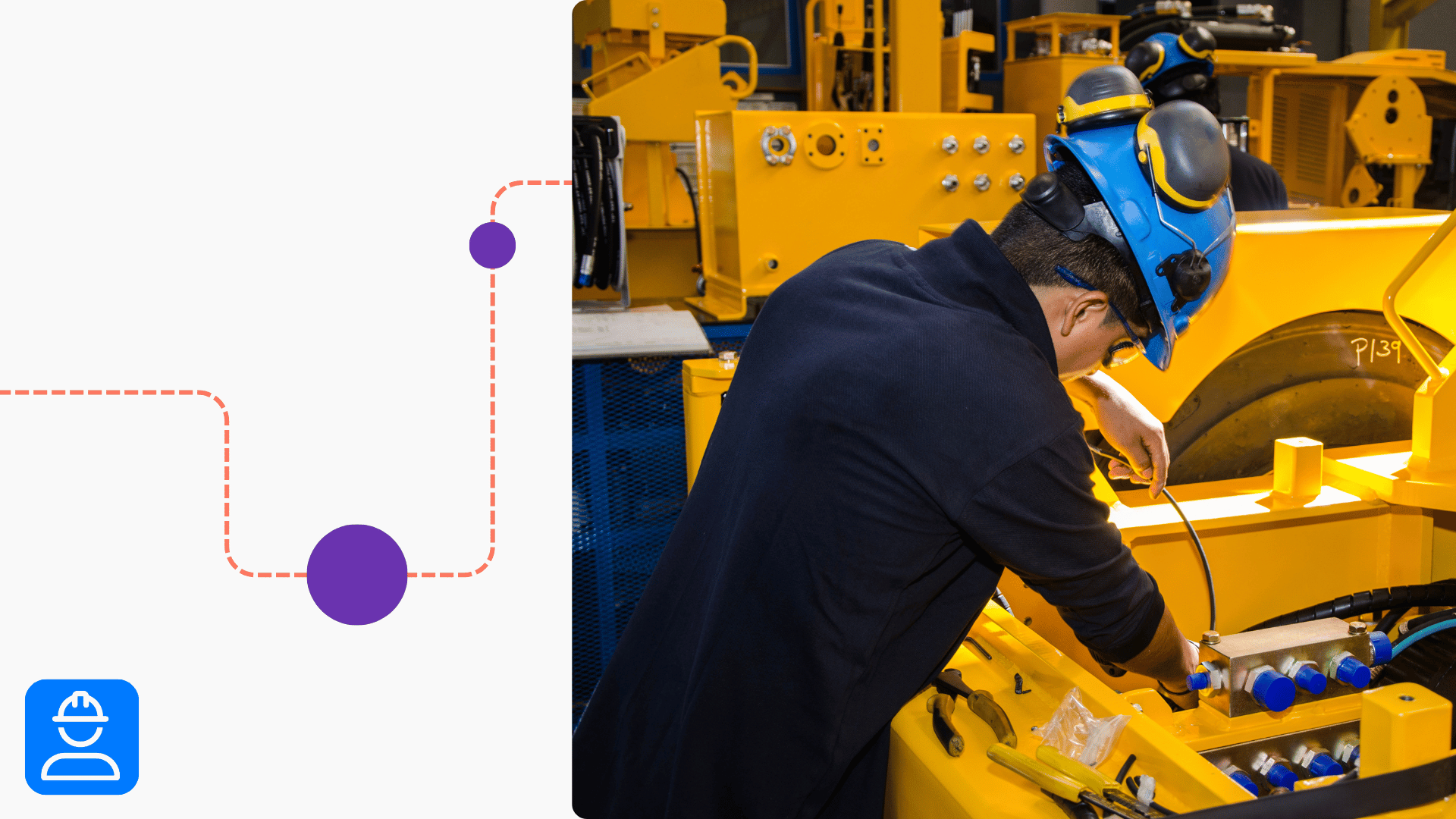Improper equipment use and insufficient maintenance are major root causes of workplace safety incidents. Thankfully, these incidents are largely avoidable if you encourage safe behaviors and implement control measures. Follow these 21 heavy equipment safety tips to protect your workers from the hazards of operating dangerous machinery.
Safety tips for operating heavy equipment
Personal safety is the cornerstone of any successful safety program. Individual workers must develop safe habits when it comes to using or working around heavy equipment. Here are some tips for heavy equipment operators:
- Perform a safety inspection before driving a heavy equipment vehicle.
- Always wear the required PPE for the equipment you’re using (gloves, hard hat, etc.).
- Only operate heavy equipment on a level and stable surface.
- If working on a slope, make sure it’s within the equipment’s grade standards.
- Use mirrors and spotters to maneuver around blind spots or high-traffic areas.
- Before moving a load, make sure it’s stable and even for safe transport.
- Always check for loose parts or missing safety mechanisms (guardrails, e-stops, etc.).
- Never transport anything that exceeds the equipment’s load capacity.
- Keep three points of contact when operating powered vehicles.
- Never attempt to repair heavy equipment unless you’re certified to do so.
Ensuring safe heavy equipment use
It’s the responsibility of the management team to create an environment that encourages safe equipment use. From the procedures you enforce to the layout of the work area, there are so many different variables to address. Follow these tips to make sure workers use heavy equipment safely regardless of who’s running the shift:
- Provide employees with equipment-specific training before allowing them to operate it.
- Do regular refreshers to make sure workers are safely using heavy equipment.
- Implement a red tag system so no one uses broken or unsafe equipment.
- Limit or suspend heavy equipment use when weather conditions increase safety risks.
- Create evacuation routes for all work areas in case of an equipment malfunction.
- Conduct weekly toolbox talks to cover equipment safety topics with your team.
- Post signs of the correct PPE for workers to wear when operating machinery.
- Install machine guards on all equipment and make sure they’re difficult to remove.
- Regularly clean equipment according to the manufacturer’s guidelines.
- Schedule preventative maintenance for heavy equipment to ensure continued safety.
- Install emergency stops on all equipment and check them regularly.
Track equipment maintenance with Frontline ACT
Implementing these heavy equipment safety tips is just one piece of the puzzle. It requires consistent engagement with employees and routine inspections to ensure the safety of workplace machinery.
For long-term hazard control, the best practice is to use action tracking software for equipment maintenance activities. That’s because software allows you to schedule, assign, track, and report on these activities without creating extra administrative work. In most cases, switching from a manual process to a digital one helps close gaps that lead to costly oversights.
With Frontline ACT, for example, you can configure workflows for the different types of equipment maintenance your team is doing. So, you might have different checklists, documentation requirements, and follow-up tasks for routine and emergency maintenance.
This gives you more control over the equipment your employees use every day. Plus, it creates routine checks and balances to make sure you address safety concerns in a timely manner and document your efforts for compliance.



